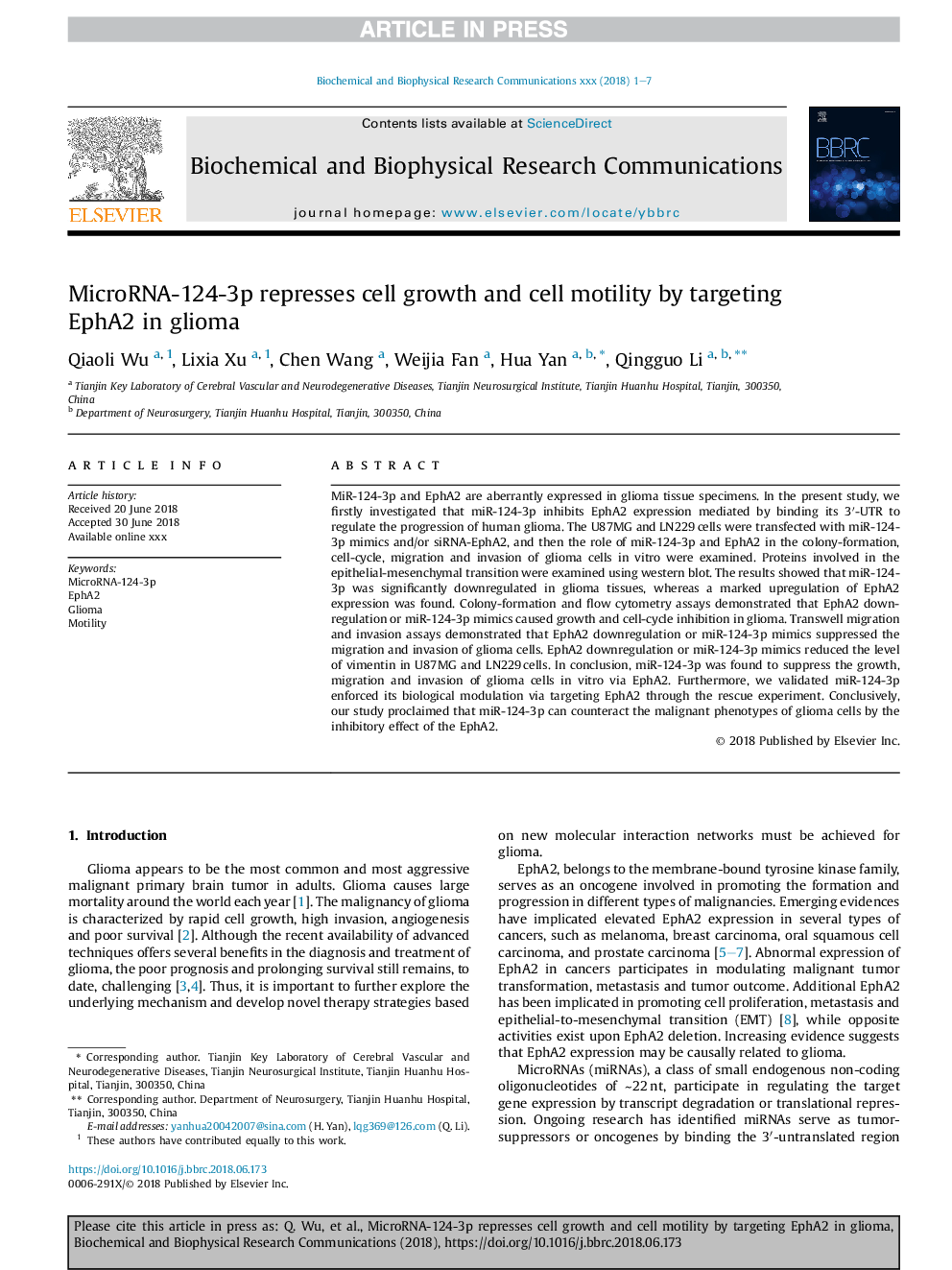| Article ID | Journal | Published Year | Pages | File Type |
|---|---|---|---|---|
| 8961808 | Biochemical and Biophysical Research Communications | 2018 | 7 Pages |
Abstract
MiR-124-3p and EphA2 are aberrantly expressed in glioma tissue specimens. In the present study, we firstly investigated that miR-124-3p inhibits EphA2 expression mediated by binding its 3â²-UTR to regulate the progression of human glioma. The U87MG and LN229â¯cells were transfected with miR-124-3p mimics and/or siRNA-EphA2, and then the role of miR-124-3p and EphA2 in the colony-formation, cell-cycle, migration and invasion of glioma cells in vitro were examined. Proteins involved in the epithelial-mesenchymal transition were examined using western blot. The results showed that miR-124-3p was significantly downregulated in glioma tissues, whereas a marked upregulation of EphA2 expression was found. Colony-formation and flow cytometry assays demonstrated that EphA2 downregulation or miR-124-3p mimics caused growth and cell-cycle inhibition in glioma. Transwell migration and invasion assays demonstrated that EphA2 downregulation or miR-124-3p mimics suppressed the migration and invasion of glioma cells. EphA2 downregulation or miR-124-3p mimics reduced the level of vimentin in U87MG and LN229â¯cells. In conclusion, miR-124-3p was found to suppress the growth, migration and invasion of glioma cells in vitro via EphA2. Furthermore, we validated miR-124-3p enforced its biological modulation via targeting EphA2 through the rescue experiment. Conclusively, our study proclaimed that miR-124-3p can counteract the malignant phenotypes of glioma cells by the inhibitory effect of the EphA2.
Related Topics
Life Sciences
Biochemistry, Genetics and Molecular Biology
Biochemistry
Authors
Qiaoli Wu, Lixia Xu, Chen Wang, Weijia Fan, Hua Yan, Qingguo Li,
